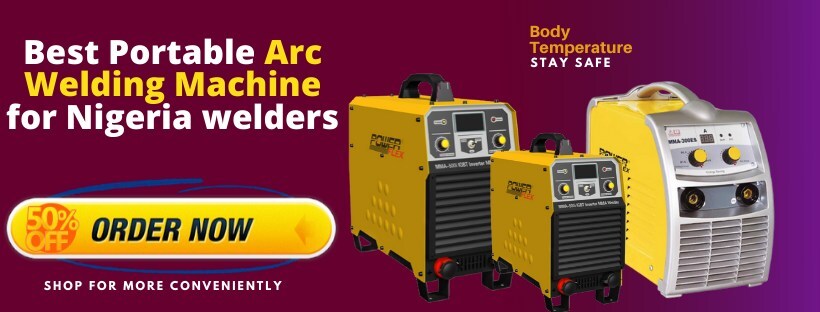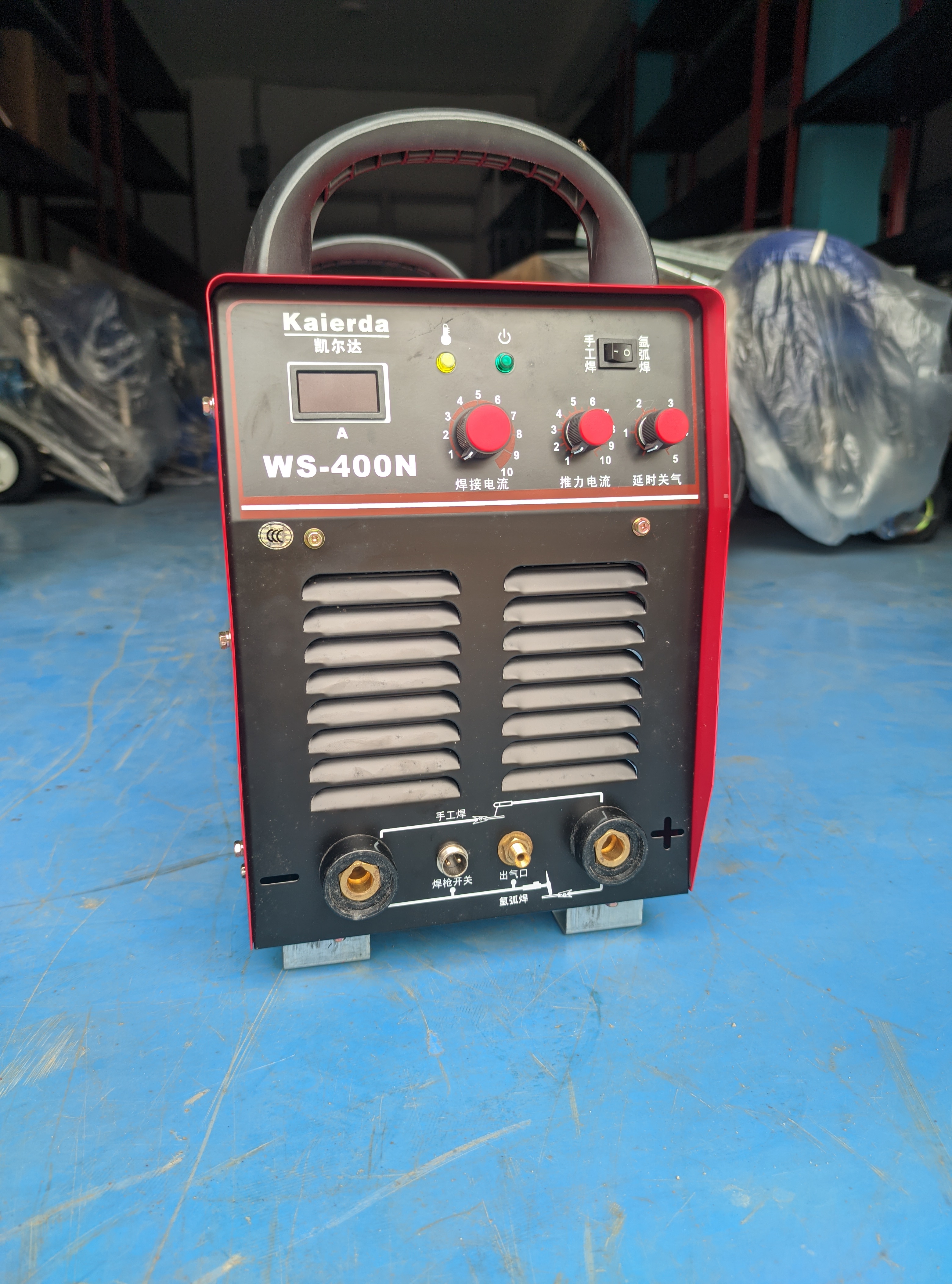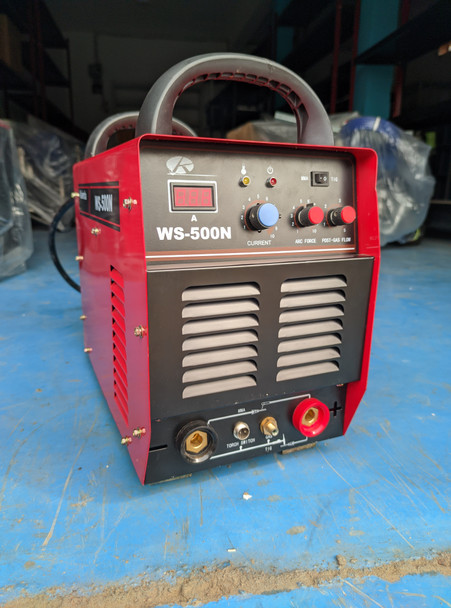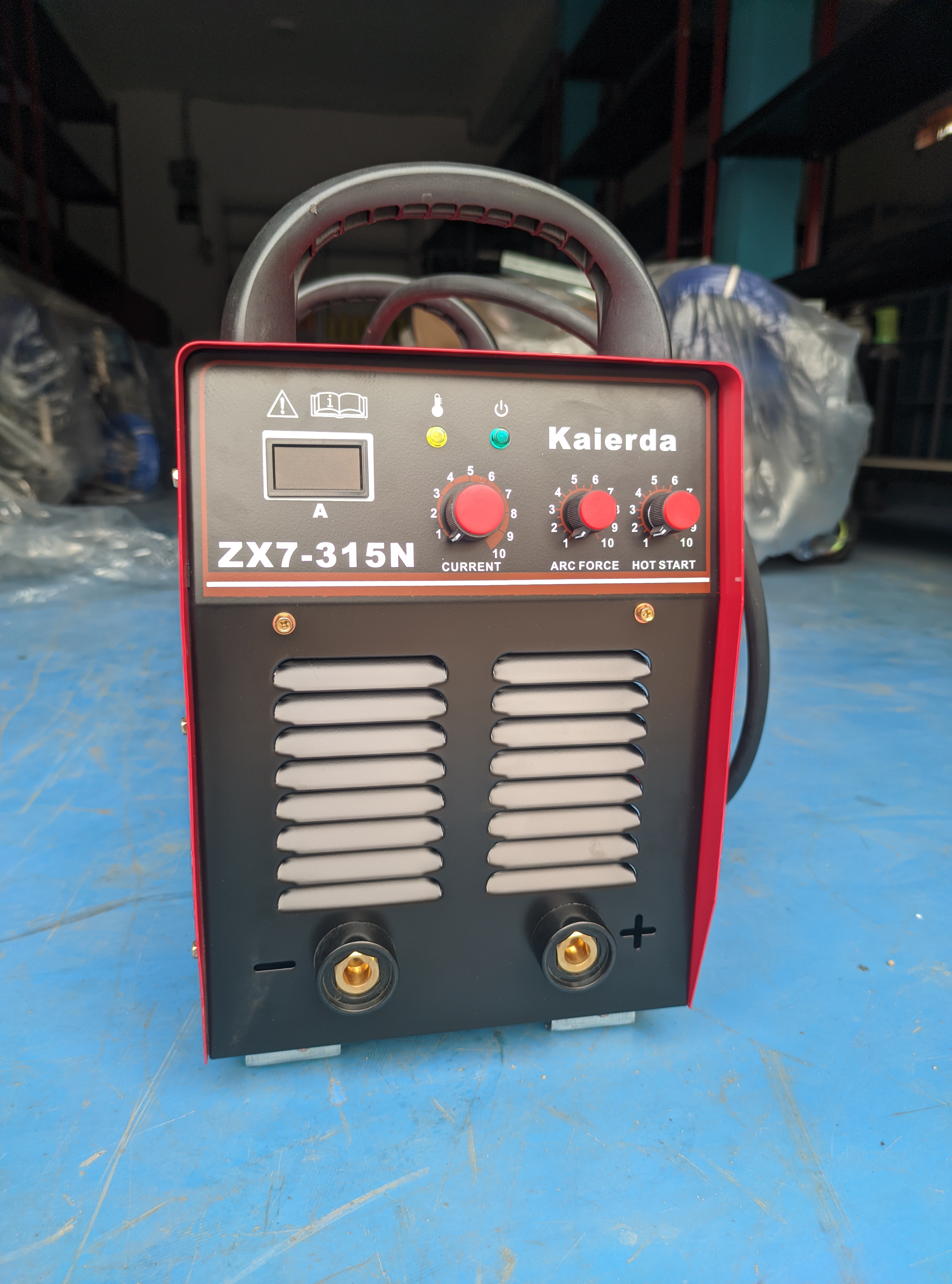Best Portable arc welding machine for Nigeria welders
Best Portable arc welding machine for Nigeria welders
Arc welding is a fusion welding process used to join metals. An electric arc from an AC or DC power supply creates an intense heat of around 6500°F which melts the metal at the join between two work pieces.
The arc can be either manually or mechanically guided along the line of the join, while the electrode either simply carries the current or conducts the current and melts into the weld pool at the same time to supply filler metal to the join.
Metals react chemically to oxygen and nitrogen in the air when heated to high temperatures by the arc, a protective shielding gas or slag is used to minimize the contact of the molten metal with the air. Once cooled, the molten metals solidify to form a metallurgical bond.
Kaierda Tig Welding machine WS400N
What are the different types of Arc Welding?
This process can be categorized into two different types; consumable and non-consumable electrode methods.
Consumable Electrode Methods:
Metal Inert Gas Welding (MIG) and Metal Active Gas Welding (MAG):
It is also known as Gas Metal Arc Welding (GMAW), it makes use of a shielding gas to protect the base metals from contamination.
Shielded Metal Arc Welding (SMAW):
This is also known as manual metal arc welding (MMA or MMAW), flux shielded arc welding or stick welding is a process where the arc is struck between the metal rod (electrode flux coated) and the work piece. Both the rod and work piece surface melt to form a weld pool. Simultaneous melting of the flux coating on the rod will form gas, and slag, which protects the weld pool from the surrounding atmosphere. This is a versatile process ideal for joining ferrous and non-ferrous materials with a range of material thicknesses in all positions.

Flux Cored Arc Welding (FCAW):
Created as an alternative to SMAW, FCAW uses a continuously fed consumable flux cored electrode and a constant voltage power supply, which provides a constant arc length. This process either uses a shielding gas or just the gas created by the flux to provide protection from contamination.
Submerged Arc Welding (SAW):
A frequently-used process with a continuously-fed consumable electrode and a blanket of fusible flux which becomes conductive when molten, providing a current path between the part and the electrode. The flux also helps prevent spatter and sparks while suppressing fumes and ultraviolet radiation.
Electro-Slag Welding (ESW):
A vertical process used to weld thick plates (above 25mm) in a single pass. ESW relies on an electric arc to start before a flux addition extinguishes the arc. The flux melts as the wire consumable is fed into the molten pool, which creates a molten slag on top of the pool. Heat for melting the wire and plate edges is generated through the molten slag's resistance to the passage of the electric current. Two water-cooled copper shoes follow the process progression and prevent any molten slag from running off.
Arc Stud Welding (SW):
Similar to flash welding, SW joins a nut or fastener, usually with a flange with nubs that melt to create the join, to another metal piece.
Kaierda Tig Welding machine WS500N
on-consumable Electrode Methods
Tungsten Inert Gas Welding (TIG):
Also known as Gas Tungsten Arc Welding (GTAW), it makes use of a non-consumable tungsten electrode to create the arc and an inert shielding gas to protect the weld and molten pool against atmospheric contamination.
Plasma Arc Welding (PAW):
Similar to TIG, PAW uses an electric arc between a non-consumable electrode and an anode, which are placed within the body of the torch. The electric arc is used to ionize the gas in the torch and create the plasma, which is then pushed through a fine bore hole in the anode to reach the base plate. In this way, the plasma is separated from the shielding gas.
Things to Consider While Selecting Arc Welders:
There are many factors which should be kept in mind while procuring the welding machines. The most significant is to know what two kinds of materials you want to fuse together. Knowing this will help you decide which method and machine to procure.
Other important factors include portability, mobility, quality, versatility, and power supply available at the workplace and whether it is compatible with the machine expected to use.
Weld any metal with ease and confidence with the Kaierda Electric welding machine WN-200S
SAFETY IN ARC WELDING:
When arc welding, observe the following general safety practices.
1. Wear gloves, eye and face protection. The welder and all observers must wear welding helmets. A welding helmet is also recommended for head protection. When chipping slag or cleaning welds, wear a clear face shield or flip up lift plate on the helmet.
2. Avoid electrical shock. Make certain that the electrode holder and all electrical connections and cables are properly insulated. Check to see that the welder is properly grounded. Do not dip the electrode holder in water to cool it because this practice may result in electrical shock.
3. Protect others. For small and practice welding jobs, work in a partitioned area to protect others from harmful rays. When prepared to strike the arc, inform all bystanders to cover their eyes.
4. Never weld in a damp area. Stand on a dry board or rubber mat if the floor or ground is damp or wet.
5. Never wear synthetic fiber clothing. Synthetic fibers are highly flammable. Wearing clothing made from wool or cotton is more satisfactory for welding because of their relatively high flash points.
6. Protect welding cables. Keep the cables from coming in contact with hot metal and sharp edges. Do not drive over cables. When welding, avoid wrapping electrode cables around your body.
7. Secure work. Use a welding table with a positioner to hold welds securely in place. Clamps and vises can be used to hold odd-shaped work or field work. Securing work will also prevent injury from accidental dropping of metal on your feet or body.
8. Dispose of electrode stubs properly. Keep a container in the work area in which to deposit electrode stubs. This prevents burns to shoes or falls due to stubs rolling underfoot.
9. Prevent burns. Never allow the hot electrode or electrode holder to touch bare skin. Avoid letting the electrode touch a grounded cable. Remove hot metal from the work area when you are finished welding to prevent burns to others.
10. Do not let the electrode stick. If the electrode sticks, release the electrode from the holder, allow the electrode to cool, and then break it loose with your gloved hand.
11. Handle hot metal with pliers or tongs. Submerge hot metal completely in water to prevent steam burns.
Kaierda Inverter DC MMA Welding Machine ZX7-315N
GZ Industrial Supplies is your number one stock shop for all welding machines and accessories. For more information and products, please contact us
FAQs.
Q: What is the purpose of preheating in arc welding?
A: Preheating involves heating the base metal before welding to reduce the risk of cracking, improve weld quality, and relieve residual stresses.
Q: What is arc welding?
A: Arc welding is a process that uses an electric arc to join two metal pieces together. The arc is created by passing an electric current between an electrode and the workpiece, which melts the metal and forms a weld pool. The electrode can be either consumable or non-consumable, depending on the type of arc welding.
Q: What is the difference between AC (alternating current) and DC (direct current) arc welding?
A: AC arc welding changes the polarity of the electrical current periodically, while DC arc welding maintains a constant polarity. DC welding is often preferred for its stable arc characteristics and ease of control.
Q: What are the types of arc welding?
A: There are many types of arc welding, but some of the most common ones are:
- Shielded metal arc welding (SMAW), also known as stick welding, which uses a consumable electrode coated with flux to protect the weld from contamination.
- Gas metal arc welding (GMAW), also known as metal inert gas (MIG) welding, which uses a consumable wire electrode fed through a torch and a shielding gas to protect the weld from oxidation.
- Gas tungsten arc welding (GTAW), also known as tungsten inert gas (TIG) welding, which uses a non-consumable tungsten electrode and a shielding gas to create a precise and clean weld.
- Flux-cored arc welding (FCAW), which uses a consumable wire electrode with a flux core that provides additional protection and filler material for the weld.
Q: How do I control the heat input in arc welding?
A: Heat input is controlled by adjusting welding parameters such as amperage, voltage, electrode size, travel speed, and arc length. Proper heat control is critical for achieving the desired weld quality.
Q: How do I adjust the current and voltage for arc welding?
A: Adjusting the current and voltage for arc welding is essential to control the heat input and output of the arc.
The current and voltage depend on several factors, such as: The type and size of the electrode, thickness of the metal, position and shape of the weld, and the desired quality and appearance of the weld.
The general rule is to increase the current and voltage for thicker metals, larger electrodes, deeper penetration, and faster speed; and to decrease them for thinner metals, smaller electrodes, shallower penetration, and slower speed.
Readers Also Liked…
Lead to buy a good welding machine in Nigeria
Different Types of Welding processes in Nigeria
Revolutionizing Industrial Processes with Arc Welding Machines: A Comprehensive Guid
Recent Posts
-
How to Choose the Right Industrial Cleaning Service Provider
Key takeawayThoroughly Assess Your Needs and Providers: Understand your specific industrial cle …Jul 26, 2024 -
Floor Paint Maintenance: How to Keep Your Floors Looking Their Best
Maintaining your painted floors is essential for preserving their beauty and extending their lifespa …Jul 25, 2024 -
The Best Floor Paint for Different Types of Flooring
When it comes to revitalizing your home's flooring, choosing the right paint can make all the d …Jul 19, 2024






